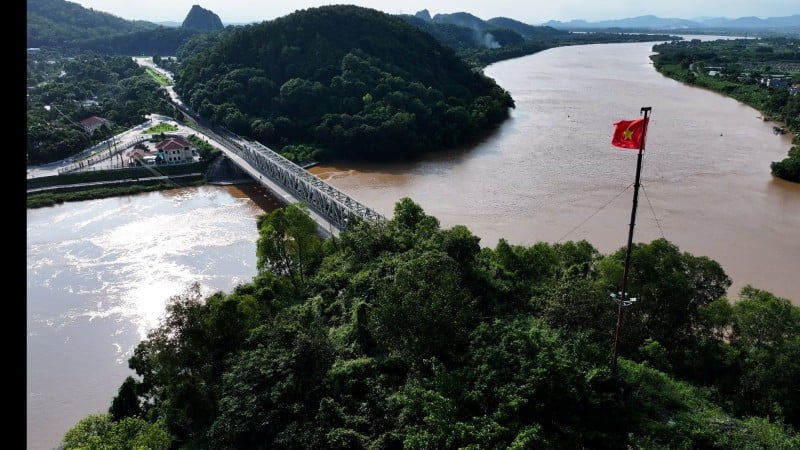
Amidst the modern pace of life in Thanh Hoa today, there is still a quiet land that holds people back, where the Ma River embraces the ancient village of Dong Son, as if retaining the breath of a thousand years of Vietnamese culture.
From the ground here, bronze drums, bronze jars, spears, pottery... have told humanity about the brilliant civilization that was born from the early days of the nation's founding. Exactly a century after the discovery of the Dong Son culture (1924-2024), the documentary "Dong Son - Land of Memory" marks the return to the cultural roots, with many layers of memories that have turned into sediment in the Vietnamese soul.
The film, produced by the People's Army Cinema, both recreates history and expresses gratitude to the ordinary people who contributed to the resounding epic Ham Rong.
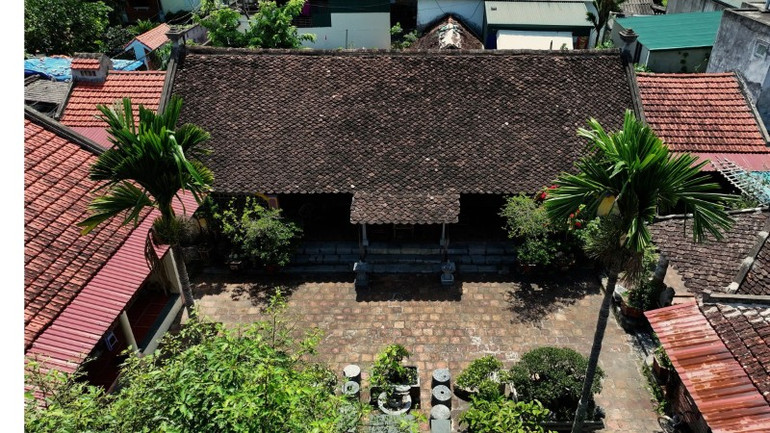
The 100th anniversary of the discovery of the Dong Son culture marks a special milestone in Vietnamese archaeology and culture. In that flow, "Dong Son - Land of Memory" is a work that combines memory, history and art. The film recreates the ancient cultural space of Dong Son village (Thanh Hoa), the cradle of the bronze drum civilization, and delves into the lifeblood of a land that was once a battlefield during the years of protecting Ham Rong bridge - the indomitable symbol of the nation.
Through a humanistic perspective, the work rekindles the story of ordinary people along the Ma River, who are both subjects in a brilliant culture and witnesses to tragic historical pages.
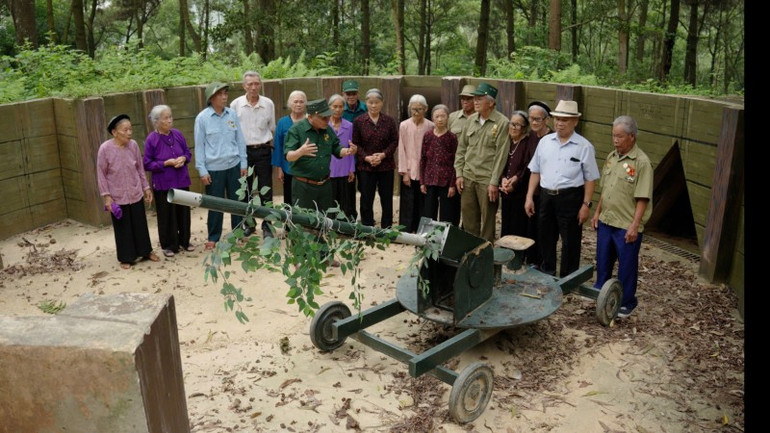
Sharing about the opportunity to create the script, screenwriter Le Ngoc Minh said that he came to the ancient village of Dong Son in 1990, during the filming of the film "My Hometown Song Ma-Ham Rong". At that time, the village only appeared for more than a minute in the total 60-minute duration of the film. But it was that moment that sowed in him a debt of gratitude to the land "named after a human civilization".
"I always feel sorry and indebted to the ancient village of Thanh Hoa, which bears the name of a human foundation - Dong Son Civilization... Every time I return, I am troubled, because the contributions and sacrifices of the people here in the fight to protect Ham Rong Bridge are immense and few people know about them," the scriptwriter shared.
From those concerns, on the occasion of the 100th anniversary of the discovery of Dong Son culture, he and cultural researcher Ha Huy Tam wrote the script for a documentary and it was put into production by the People's Army Cinema.

The film opens with a flycam angle covering the ancient village of Dong Son with its mossy tiled roofs, the alley named Nhan-Nghia-Tri-Dung, the Ma River winding beside the legendary Ham Rong Bridge. That poetic image is placed next to war documents, where bombs and bullets once plowed, creating a contrast between today's peace and the smoke and fire of the past.
The film recreates the moment of discovery of Dong Son culture in 1924, when Mr. Nguyen Van Nam, a villager, found the first bronze artifacts in Dong Xuoi. From that discovery, Western archaeologists named "Dong Son Culture" for the brilliant bronze civilization of the ancient Vietnamese.
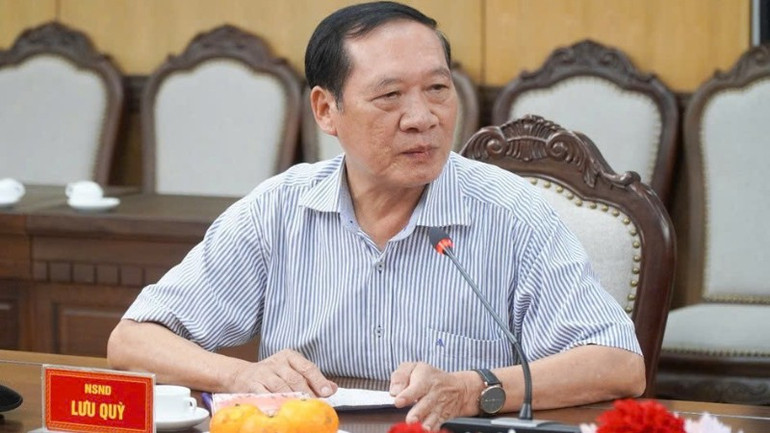
Director, People's Artist Luu Quy shared that the journey of making the film was both arduous and poetic. According to him, the most difficult thing was not to recreate the historical context, but to find the emotional rhythm of memories. There, Ham Rong Bridge connecting the two banks of history has become a symbol of Vietnam's will during the two resistance wars and connects two regions of memory: one side is the source of Dong Son culture, the other side is the tragic years of the war to protect the Fatherland.
In the 1960s, Ham Rong became the "fire coordinate" where Thanh Hoa's army and people made a miracle by shooting down hundreds of American planes, protecting the vital north-south traffic route. It was here that the immortal oath "Rather fall by artillery than let the bridge fall" was made.
More than half a century has passed, the bridge still stands tall in the middle of the Ma River, witnessing the strong revival of the land that was once devastated by bombs and bullets. According to the director, the crew went on many field trips to Thanh Hoa, spending a lot of time just "living" with the ancient village space.
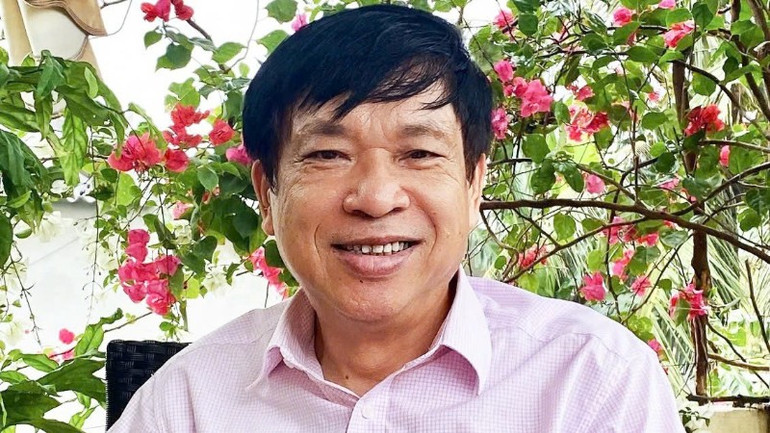
There were early mornings when the mist covered the Ma River wharf, and the film crew just stood still by the Ham Rong Bridge without filming anything. From those emotions, People's Artist Luu Quy chose to tell the story through visual language rather than commentary. He used flycam angles covering the Ma River-Ngoc Mountain space to show off the majesty of the sacred land, while interspersing original war documents and current images to create a seamless flow of time.
The highlight of the documentary, emphasized by People's Artist Luu Quy, is the music . He chose the harmony from the melody of musician An Thuyen, who composed for the film "My Hometown Song Ma-Ham Rong" in 1990.
"Sometimes the music is silent so the audience can hear the witness's heart, sometimes the music rises like the sound of a bronze drum in the air. I want the audience to feel the movement of memories - from deep to bright, from sorrow to pride," the film director shared.
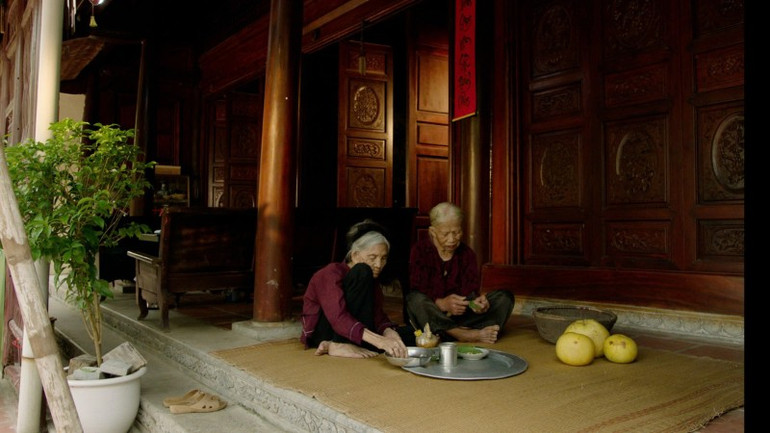
During the filming process, the film crew also encountered many difficulties: erratic weather, many relics had changed and the reconstruction of the Ham Rong battlefield with original materials required high accuracy. However, the film crew received close guidance from the Party Committee, the Directorate of the People's Army Cinema, and the support and facilitation of agencies, units and local authorities to help the film crew complete the task well.
Scriptwriter Le Ngoc Minh highly appreciated the friendly and open-minded working spirit of the film crew, especially during the discussion with director Luu Quy: "We have a common voice about the message and the way of expression. I believe that the audience nationwide will see an interesting historical and cultural documentary about the village named after a human civilization."
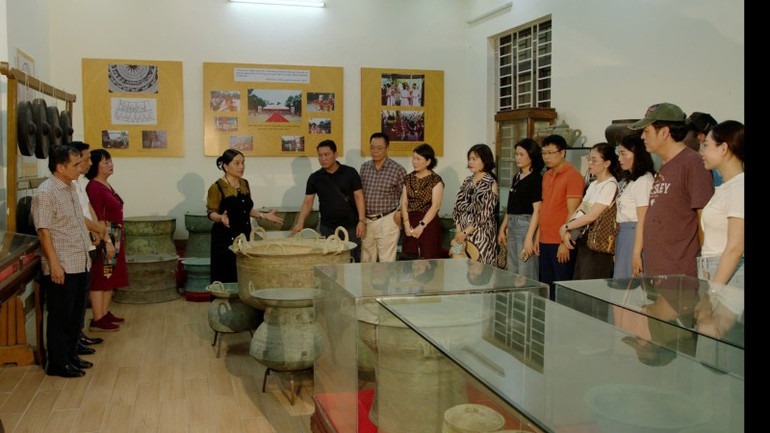
The scriptwriter also shared: "To have an address with a rich history and brilliant culture like Dong Son ancient village is the merit, dedication and sacrifice of many generations of famous and unknown people. The responsibility of future generations is not to forget that persistent, resilient and wise tradition. Not to forget, but to continue to foster and honor so that tradition becomes even more radiant."
"I hope that through the film, the audience, especially the young generation, will not only know, but also feel and ask themselves: how will we preserve and retell the memories of our homeland...", director Luu Quy confided.
"Dong Son - Memory Land" is an effort of the People's Army Cinema in expanding the creative range of documentary films. From topics about armed forces and revolutionary wars, the unit has turned to cultural-historical films, where the memories of soldiers blend with the memories of the community in the national flow.
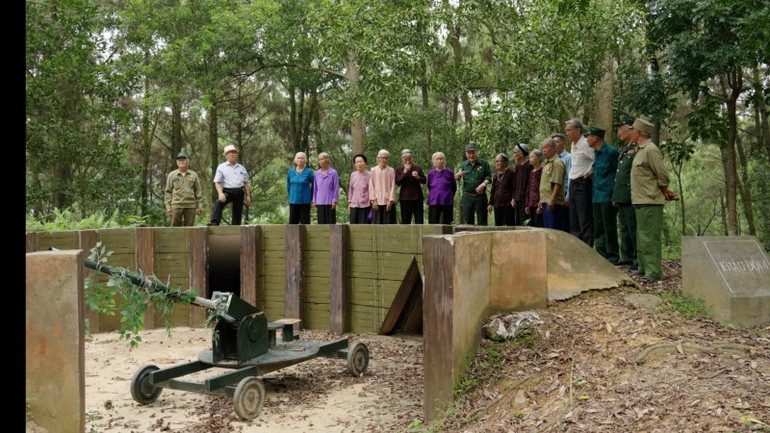
One of the profound meanings that the work evokes is the strong bond between family, village and country. In the ancient village of Dong Son, each house and alley bears the mark of community life, where family love and neighborhood affection converge to form the strength to protect the homeland. During the war, the father went to war, the mother stayed in the rear, the children replaced their parents to guard the village, all united in the same will: "To protect the village is to protect the country". After peace, that bond continued to be passed down through many generations, becoming the foundation for the spirit of national solidarity.
Director Luu Quy emotionally expressed: The more I learn about Dong Son, the more I see clearly that the Vietnamese philosophy of life lies in that enduring connection. There is no separation between family and the Fatherland. Preserving the memory of the homeland is also preserving the national identity.

The film therefore also depicts the spirit of empathy, coexistence, and shared destiny of the Vietnamese people, where each individual is a living part of the great national family. It is from these ties that traditions and memories are nurtured, spread, and become the endogenous strength that creates the Vietnamese character today.
At the end of the film, the Ma River still flows tirelessly under the foot of Ham Rong Bridge, reflecting the moss-covered tiled roofs of the ancient village of Dong Son. In the sound of the film's final music, viewers seem to still hear somewhere the sound of bronze drums echoing from the past, mixed with the sound of anti-aircraft artillery in the past and the rhythm of life today.
Source: https://nhandan.vn/phim-tai-lieu-dong-son-mien-ky-uc-tai-hien-ve-dep-sau-sac-cua-van-hoa-va-lich-su-post922979.html



![[Photo] Special class in Tra Linh](https://vphoto.vietnam.vn/thumb/1200x675/vietnam/resource/IMAGE/2025/11/14/1763078485441_ndo_br_lop-hoc-7-jpg.webp)
![[Photo] Unique art of painting Tuong masks](https://vphoto.vietnam.vn/thumb/1200x675/vietnam/resource/IMAGE/2025/11/14/1763094089301_ndo_br_1-jpg.webp)
![[Photo] Deep sea sand deposits, ancient wooden ship An Bang faces the risk of being buried again](https://vphoto.vietnam.vn/thumb/1200x675/vietnam/resource/IMAGE/2025/11/13/1763033175715_ndo_br_thuyen-1-jpg.webp)


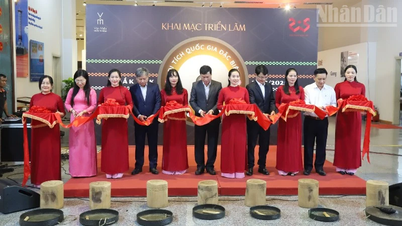





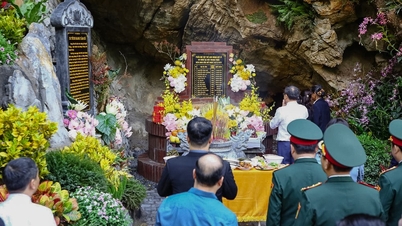






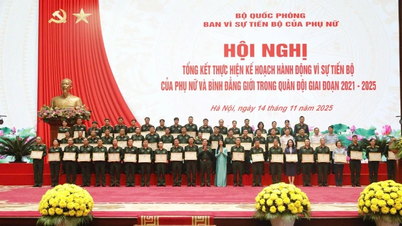
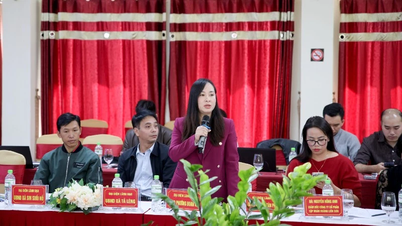
![[Photo] Unique architecture of the deepest metro station in France](https://vphoto.vietnam.vn/thumb/402x226/vietnam/resource/IMAGE/2025/11/14/1763107592365_ga-sau-nhat-nuoc-phap-duy-1-6403-jpg.webp)
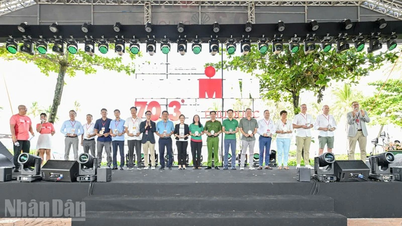

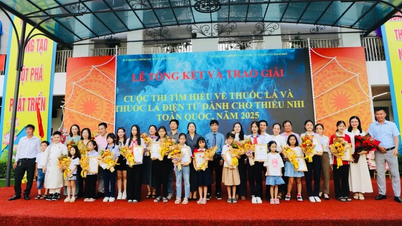












































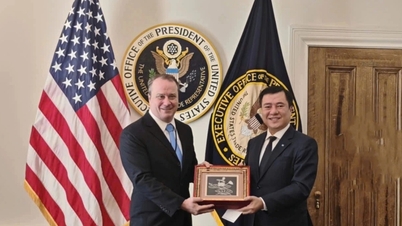

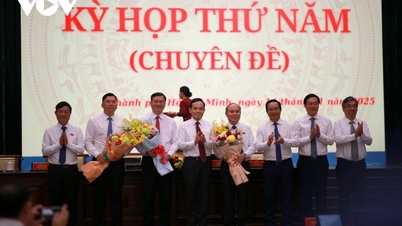











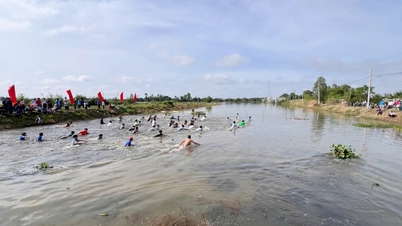
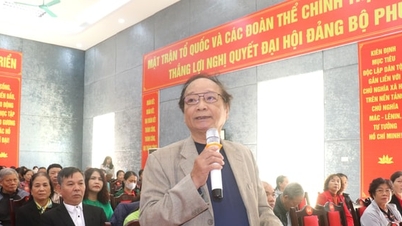









![Dong Nai OCOP transition: [Article 3] Linking tourism with OCOP product consumption](https://vphoto.vietnam.vn/thumb/402x226/vietnam/resource/IMAGE/2025/11/10/1762739199309_1324-2740-7_n-162543_981.jpeg)






Comment (0)